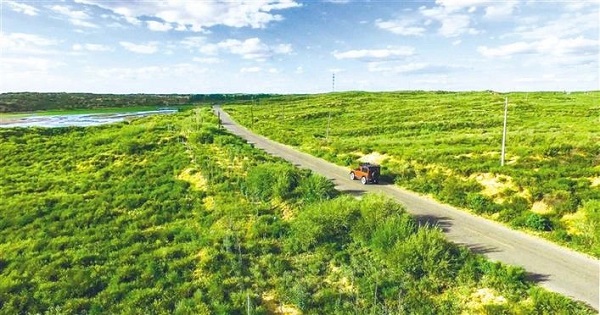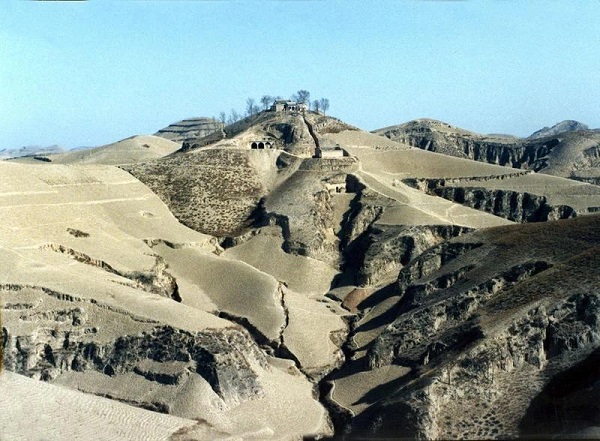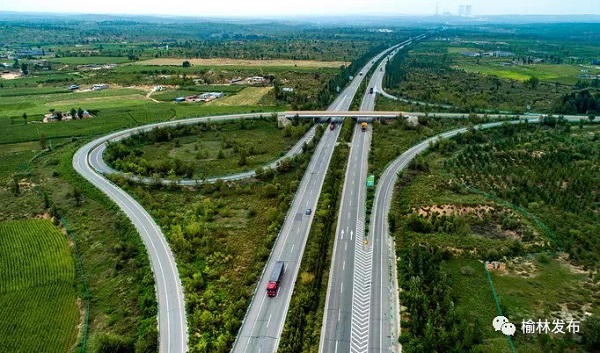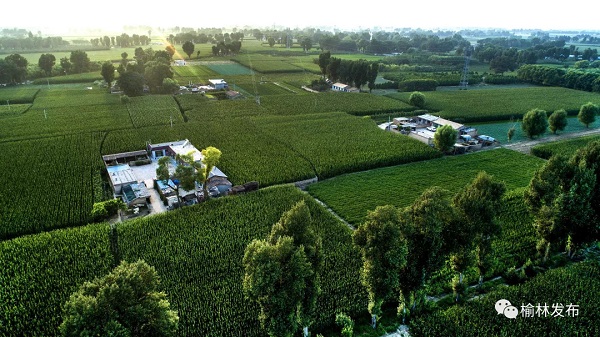93.24 percent of the desertification land in Yulin, Northwest China's Shaanxi Province, has been turned green, the province's forestry bureau announced Wednesday. This means that the Maowusu Desert is about to "disappear" in Shaanxi.

Vegetation beside a reservoir in Mengjiawan Town, Yuyang District of Yulin, Northwest China's Shaanxi Province. (Photos from web)
Maowusu Desert, with an area of 42,000 square kilometers, lies mainly in the southern part of the Inner Mongolian Autonomous Region, the eastern part of Ningxia Hui Autonomous Region, and the northern part of Shaanxi Province.
During the Wei, Jin, Northern, and Southern Dynasties (220-589 AD) in ancient China, the desert was a large and fertile grassland. Due to the immoderate reclamation and the impact of the war, the desert turned into a small sandy land in the Tang Dynasty (618-907 AD). The grassland gradually devoured by the sand because of unreasonable exploitation and it finally became a desert after thousands of years.
Nearly one hundred years before the founding of New China, the quicksand had eroded the land more than 50 kilometers to the south of the Great Wall. In the 1950s, the forest coverage rate of Yulin was only 0.9%. The quicksand engulfed 1.2 million mu (8,000 square kilometers) of farmland and pasture. 6 towns and 412 villages were eroded and buried by a sandstorm.

The view of an ecological park in Zizhou County, Yulin, Shaanxi Province in 2003.

The view of the same ecological park in Zizhou County, Yulin, Shaanxi Province in 2016.
There was a saying circulating among the local people, "No vegetation covers the mountains or the bottomlands. Only the yellow sand surges on and on. Most of the cultivation will result in no harvest." Desertification control became a fight that cannot fail.
With the successive launch of national key projects, such as the Three-North Shelterbelt Forest Program, natural forest protection, and the conversion of farmland to forest and grass, desertification control has become the common goal of the local people.
On May 14, 1974, in order to improve the living environment, 54 militiawomen, only 18 years old on average, began to fight the sandstorm in a place in Bulanghe Township which suffered the most severe erosion by the sandstorm.

The militiawomen
Under the leadership of 14 company commanders, the militiawomen had bulldozed more than 800 sand dunes and established 35 windbreak and sand fixation forest belts.
In 1984, the Chinese government encouraged individual contracting for desertification control. Shi Guangyin became the first person in Yulin to do this. He set up the first joint-stock desertification control company of farmers in China, not only contributing to desertification control but also achieving prosperity.
Niu Yuqin, a national standout in desertification control, has turned 110,000 mu (73.33 square kilometers) of the desert into an "artificial oasis" after more than 30 years of hard work. When asked why she did that in an interview, she said, "there is no other way for us than controlling desertification!"

The Yujing Expressway that crosses the Maowusu Desert is the first desert highway built in China.
Generations of people have engaged in this heroic undertaking and turned the desert into an oasis in the past 70 years. The area of Maowusu Desert had been reducing at an annual rate of 1.62 percent. The forest coverage rate has increased from 0.9 percent to 34.8 percent.

Farmhouse in the green surroundings of Xinjian Village of Dongkeng Town, Jingbian County, Yulin, Shaanxi Province.
The afforestation efforts have also brought prosperity to this area. Greenhouse planting and desert tourism have seen a flourishment. More than 150 units with more than 100,000 employees engaged in the sand industry in Yulin have an annual yield of 480 million yuan ($67.85 million).
(Compiled by Cao Mengqi)


